21 Effective Strategies for Comprehension to Use INSTEAD of Translation
“I took four years of (fill in the blank) and can’t speak a word of it!” is the fruit of a grammar, translation-based instruction. I teach grammar and believe it is important, but I know language is learned primarily through comprehensible input and repetition in context. By CI, I mean messages that can be understood because of context, visuals, actions, or cues. But that subject is for another blog post. This post talks about strategies for comprehension and production that world language teachers can use instead of translation.
It’s about why we shouldn’t use translation (except for some grammar explanations) and the strategies that DO lead our students to proficiency.
Keep reading to find the free resources embedded in the post.
WHY NOT USE TRANSLATION?
In the hierarchy of language learning, translation is the last skill acquired and the most difficult. In fact, many people can be fluent in a language but have difficulty translating or interpreting. I speak three languages fluently and can think well in one language at a time. However, the translation process requires more concentrated brain juice than I like to expend. Yet we are asking our students to translate when they are not yet able to comprehend spoken language.
Second Language Acquisition Stages
- STEP ONE: The first ability one acquires when exposed to a language is comprehension. “I understand some of what you are saying.”
- STEP TWO: I can say one or two words and I understand more of what you are saying.
- STEP THREE: I can say some sentences with frequent grammar and pronunciation errors that you MIGHT UNDERSTAND . My reading skills are improving. (For those of you who do not speak Spanish, the person below (moi) should be saying, “Me llamo Angie Torre.” Adding the “es” is a common level one mistake.
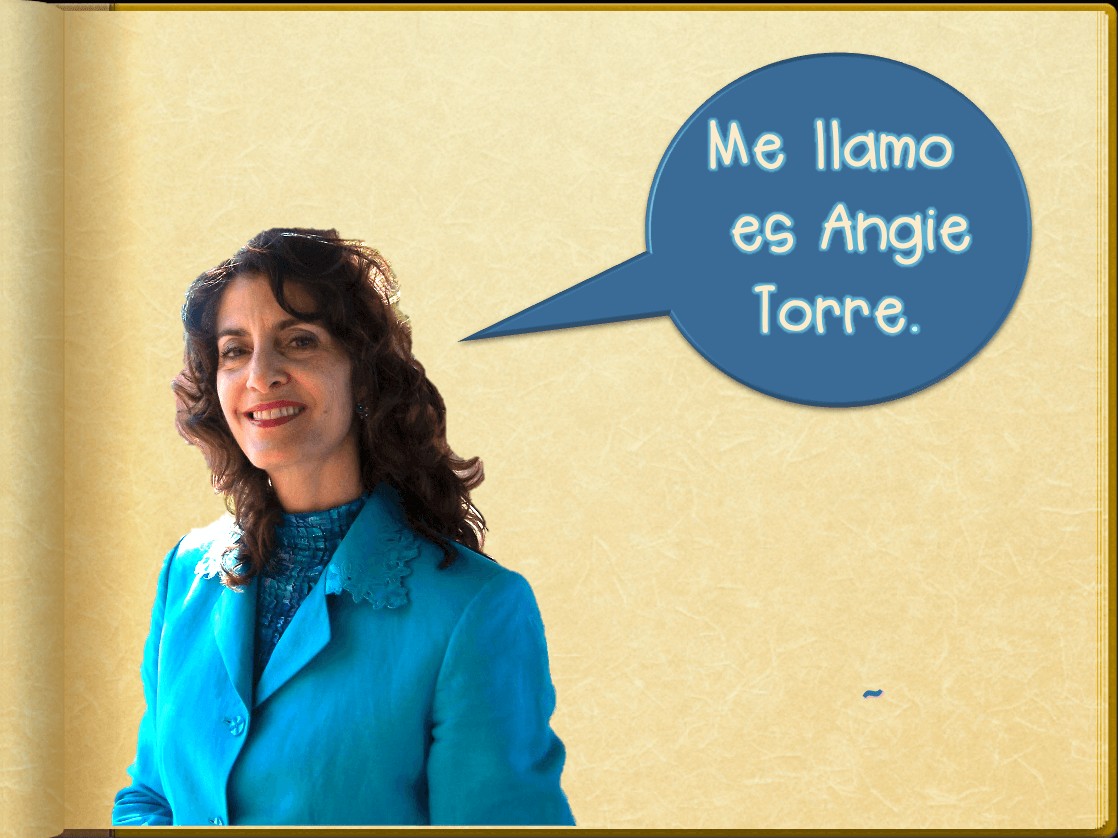
- STEP FOUR: I can say sentences and paragraphs that you do understand, engage in conversations, and narrate with some errors. My reading comprehension skills are excellent.
- STEP FIVE: I can give an opinion and support it with few errors. I begin to understand and use academic language.
- STEP SIX: MAYBE, if I’m gifted and have extensive training, I can translate and interpret.
There are many activities that attain the goal of proficiency that foreign language teachers can use instead of literal translation (which usually does NOT lead to proficiency). Here are a few of my go-to’s.
1. ¿LÓGICO O NO?
Instead of the prompt, “Traduzcan las frases del inglés al español”, write this promp: “Cambien las frases ridículas a frases lógicas”, or, “Si la frase es lógica, escriban, ‘lógica’. Si no es lógica, escriban una frase lógica”. This gives students CORRECT language in context, more comprehensible input and helps them think in the target language.

2. DESCRIBAN LAS IMÁGENES:
It rains visuals in my classroom. Instead of telling language learners to translate, “He’s sleeping,” I show a visual of someone sleeping when teaching the Spanish progressive tense. When teaching comparisons, I have students describe two different images.



Don’t forget to use apps to add zip to your visuals and keep your students interested, as I did in this 15-second video for the lesson on, the Spanish verb, “tener”. I used the VIMO app to add comical text and images. Comprehensible Input should be included in most activities anyway. Students cannot have enough language in context.
3. COMPLETEN LAS FRASES:
Assign Cloze activities with missing vocabulary or verbs. Of course, students must fill in the verbs with the proper conjugation, but in order to complete the sentences correctly, they must also understand the meaning of the verbs. Before assigning this activity, I act out the verbs with the students so they can assimilate the new vocabulary.
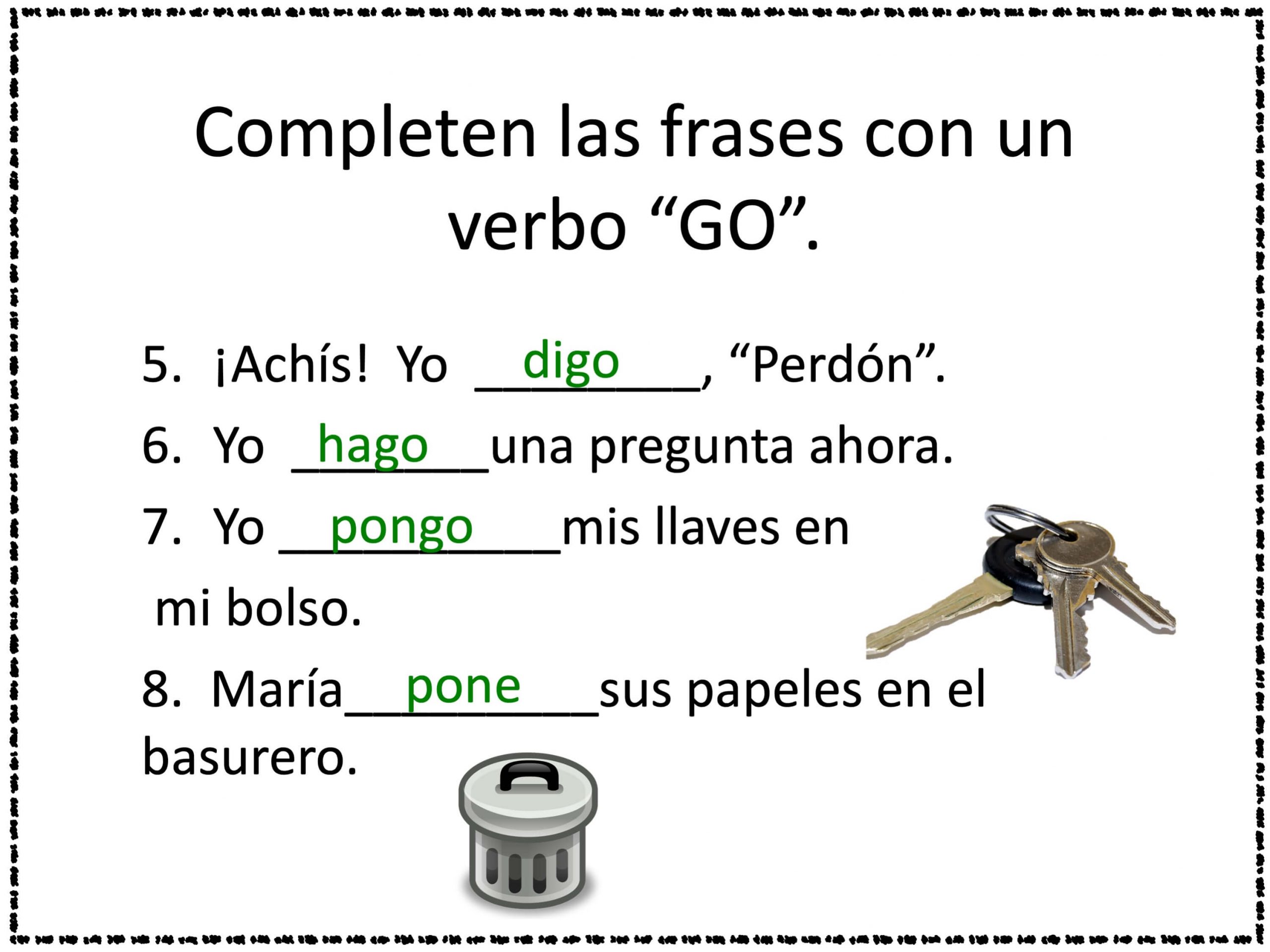
4. CONTESTEN LAS PREGUNTAS:
This strategy is not new. Its benefit is that it is authentic communication. Progressive Tense: What are you doing right now? Preterite: What did you do last weekend? Conditional: What would you buy with a million dollars? Even better, add visuals.



5. ¿QUÉ NO DEBE ESTAR?
I love putting things in places they don’t belong because it’s funny and humor always makes the lesson more engaging. Also, students learn language structures through repetition. After writing or saying, “…no debe estar,” multiple times, students will be able to talk about what things should and shouldn’t be in certain places and what one should and shouldn’t do.
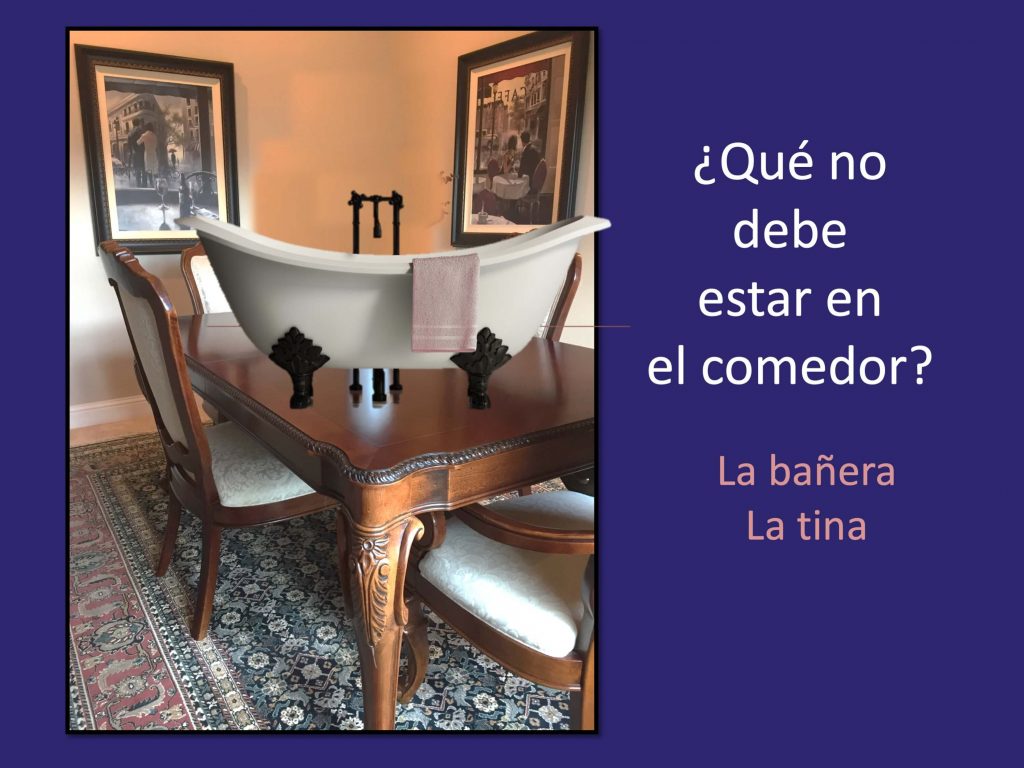
6. HAZ UN CÍRCULO:
More comprehensible input! Write a short excerpt using many vocabulary words or examples of a grammar concept you are teaching and have students circle sentences that make no sense. They are exposed to more repetition of the concepts while finding the misfits. Language is now communication and messages, not a drill they have to do for their Spanish class.
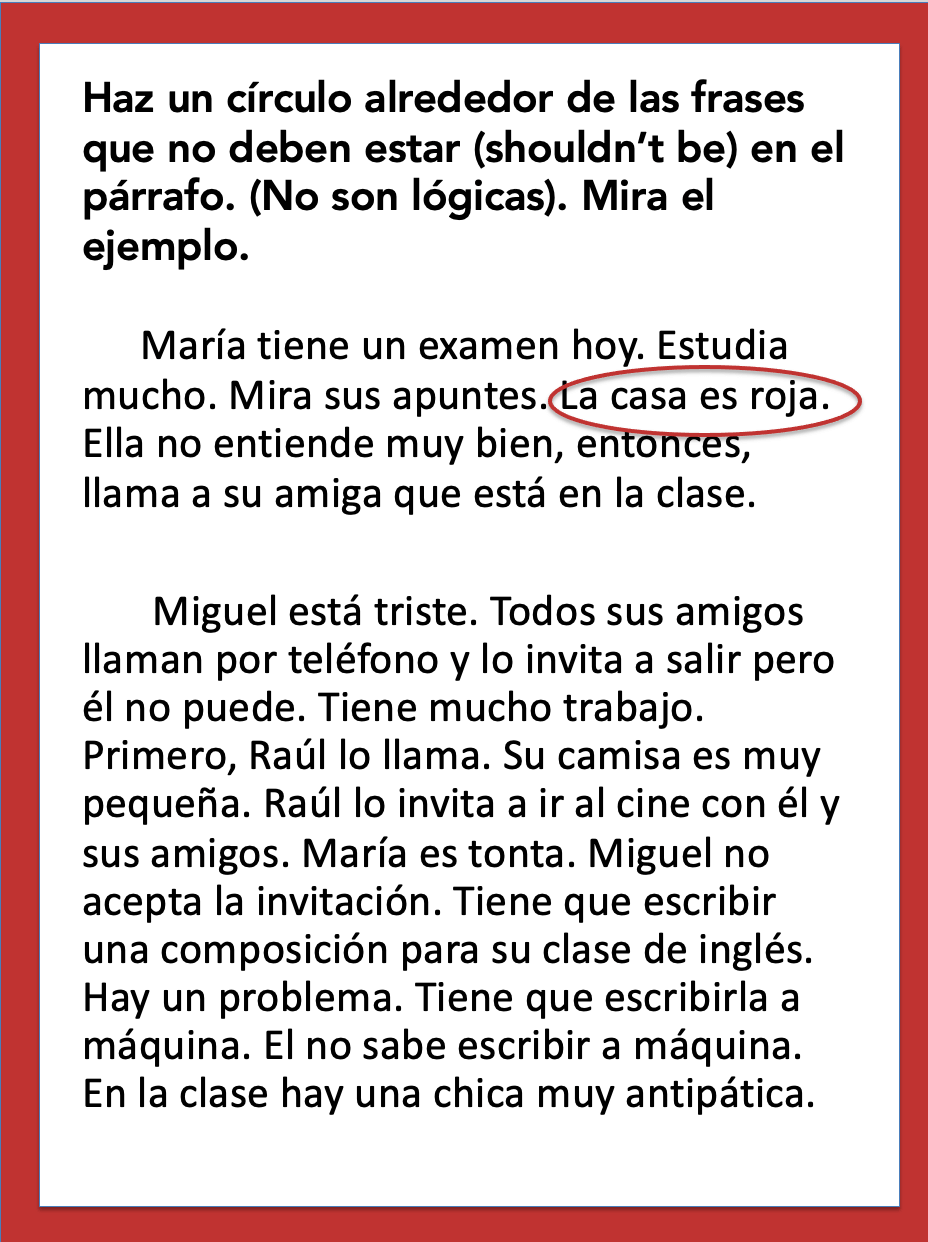
7. PANCHO CAMANCHO:
Instead of asking students to translate, “I have to do my homework but I feel like sleeping”, play, “Pancho Camacho” with them. Half the class writes, “Tengo que…” and an infinitive and the other half writes, “Pero tengo ganas de + infinitive” on their white boards.
Model how to play it: Raise your board and say, “Tengo que trabajar pero tengo ganas de…” and look around the room for a whiteboard that says, “Tengo ganas de…”. Finish your sentence. “Tengo que trabajar pero tengo ganas de dormir”.
The person whose board says, “Tengo ganas de dormir,” says, “Tengo ganas de dormir pero….” and finishes their sentence with a sentence about what they have to do. Ring the bell after a prescribed time (about a minute). Whoever is talking when you ring the bell is OUT! Play until students are bored with it and give prizes to the winners, those who are still in the game. Students soon realize they must speak quickly to stay in the game and after much repetition, they definitely know the meaning of those expressions without the use of translation.
8. GRAB PAIRED GAME:
Instead of having students write the English translation of nouns, (¡Qué horror!) have them sit in pairs and spread the pictures of the objects on their desks. Say complete sentences with the vocabulary embedded. The first student to grab the correct object wins. Students LOVE this game and while they are learning, they are hearing language in context. I show the answers on a slide so students know which drawing is the correct one.
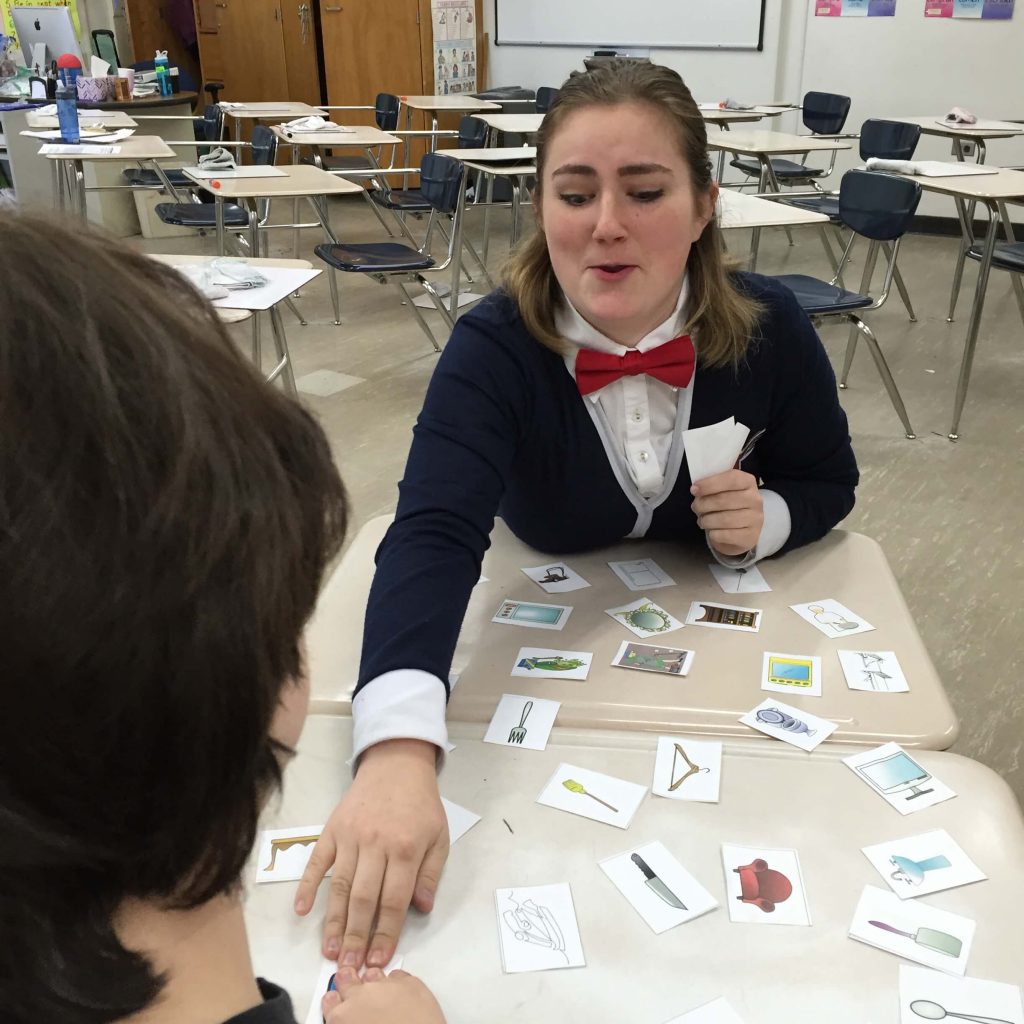
9. COMMAND EACH OTHER:
For the commands and prepositions, instead of asking students, “¿Qué quiere decir, ‘The apple is behind the banana,’” have students command each other. Grade the commander on his/her use of the commands and prepositions and grade the one who obeys on his/her obedience. Of course, the non-presenters must have an observer sheet to fill out (which will be graded) as they watch so they are not bored and off-task. Click on the following link to see the rubric and observer sheet I use: COMMANDS PRESENTATION
10. PUT THE EVENTS IN ORDER:
For the reflexive verbs, instead of having students translate, “She wakes up at 6:00” (lucky girl), have them put a list of events in a logical order. It is more authentic (In what order do you get ready in the morning?) and students navigate meaning while they are arranging the order of the sentences. (Again, exposure to comprehensible input WHILE they practice.) Repetition, repetition, repetition!
11. DICE GAME:
Instead of saying, “¿Cómo se dice, ‘I put my book on the desk,’”, students play the dice game in pairs. Way more fun and uses CI. And, of course, use visuals to aid in comprehension.
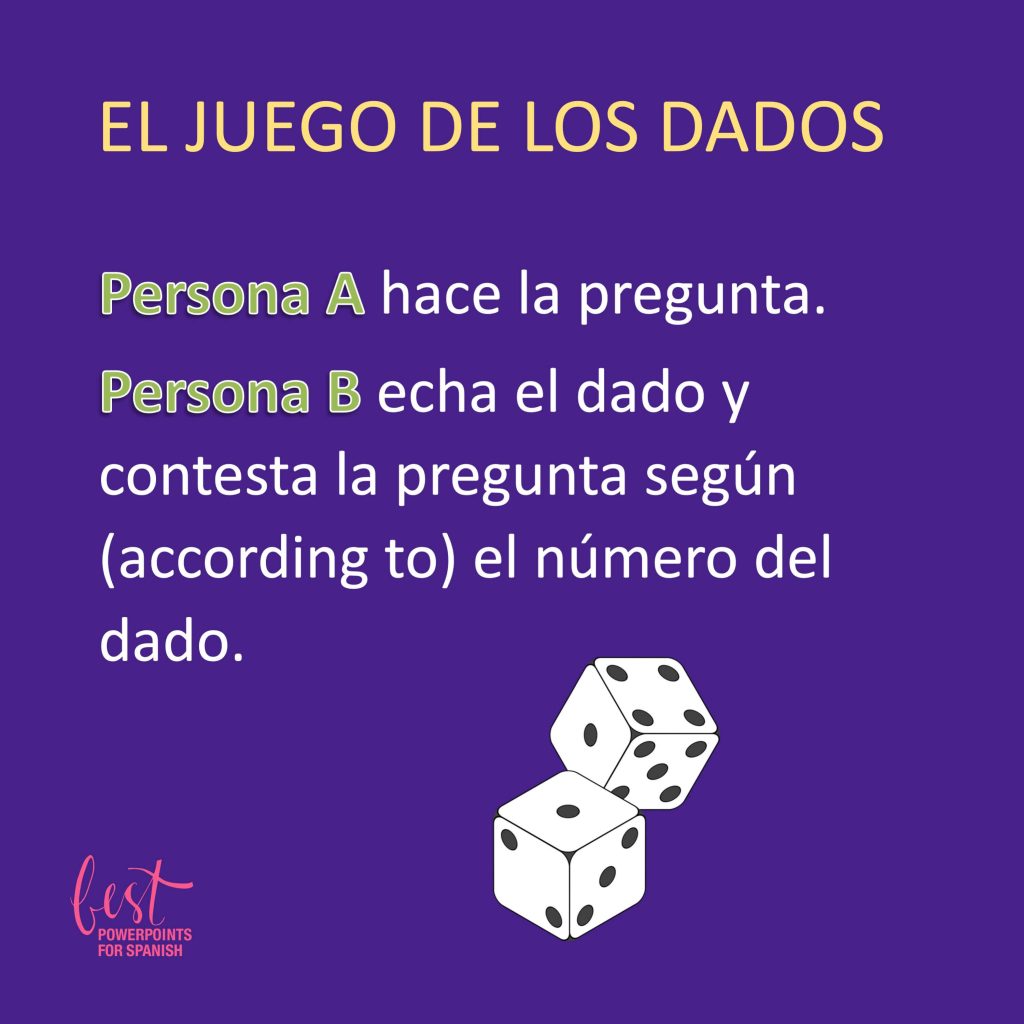

12. TPRS STORYTELLING AND VIDEOS:
Stories and videos are the BEST comprehensible input, in my humble opinion, and the corresponding activities recycle language and lead to proficiency (finish the sentences, finish the story, write your own story using the vocabulary, cloze stories, etc.)
The best videos have native speakers, target-language captions, and pop-in images. The native Spanish or French actors provide authentic pronunciation. The captions allow students to SEE as well as HEAR the language and the pop-in images aid in comprehension. Click on the following link to see SPANISH VIDEOS FOR COMPREHENSIBLE INPUT
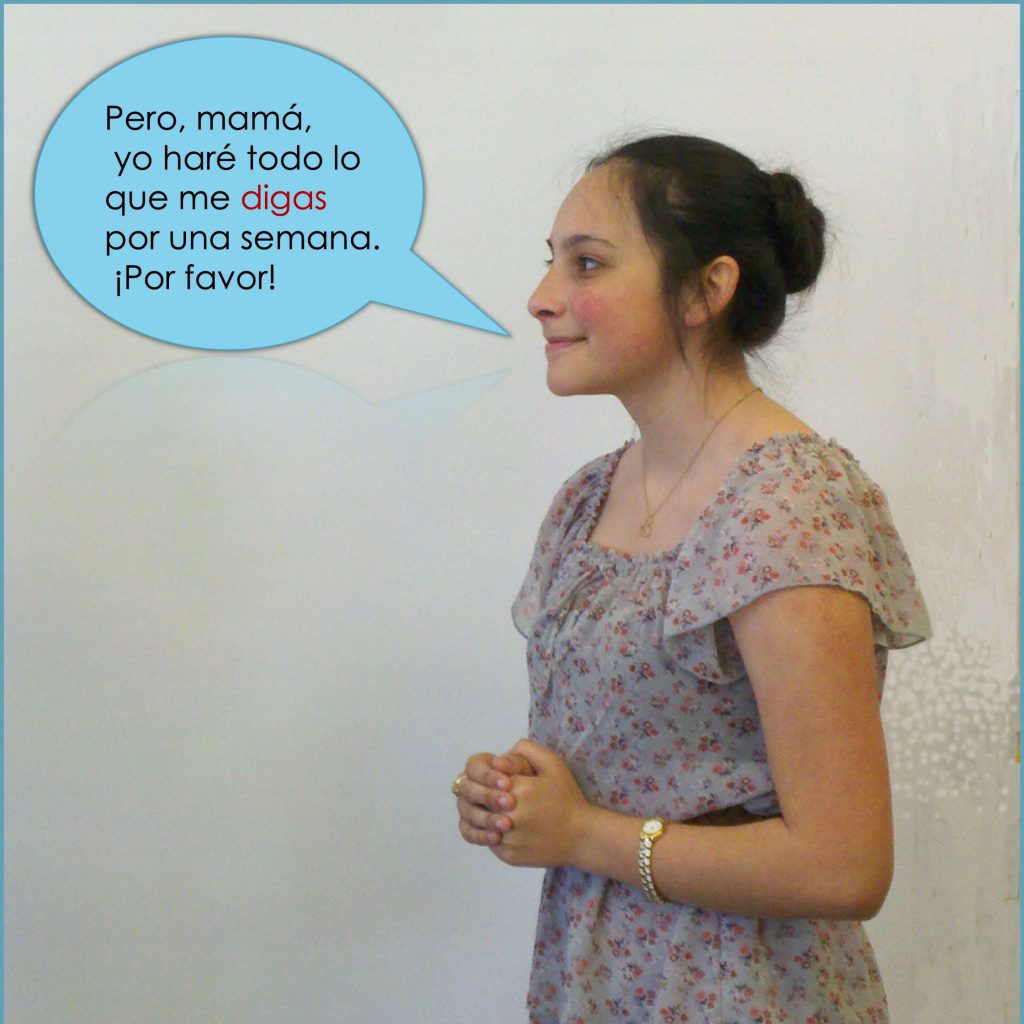
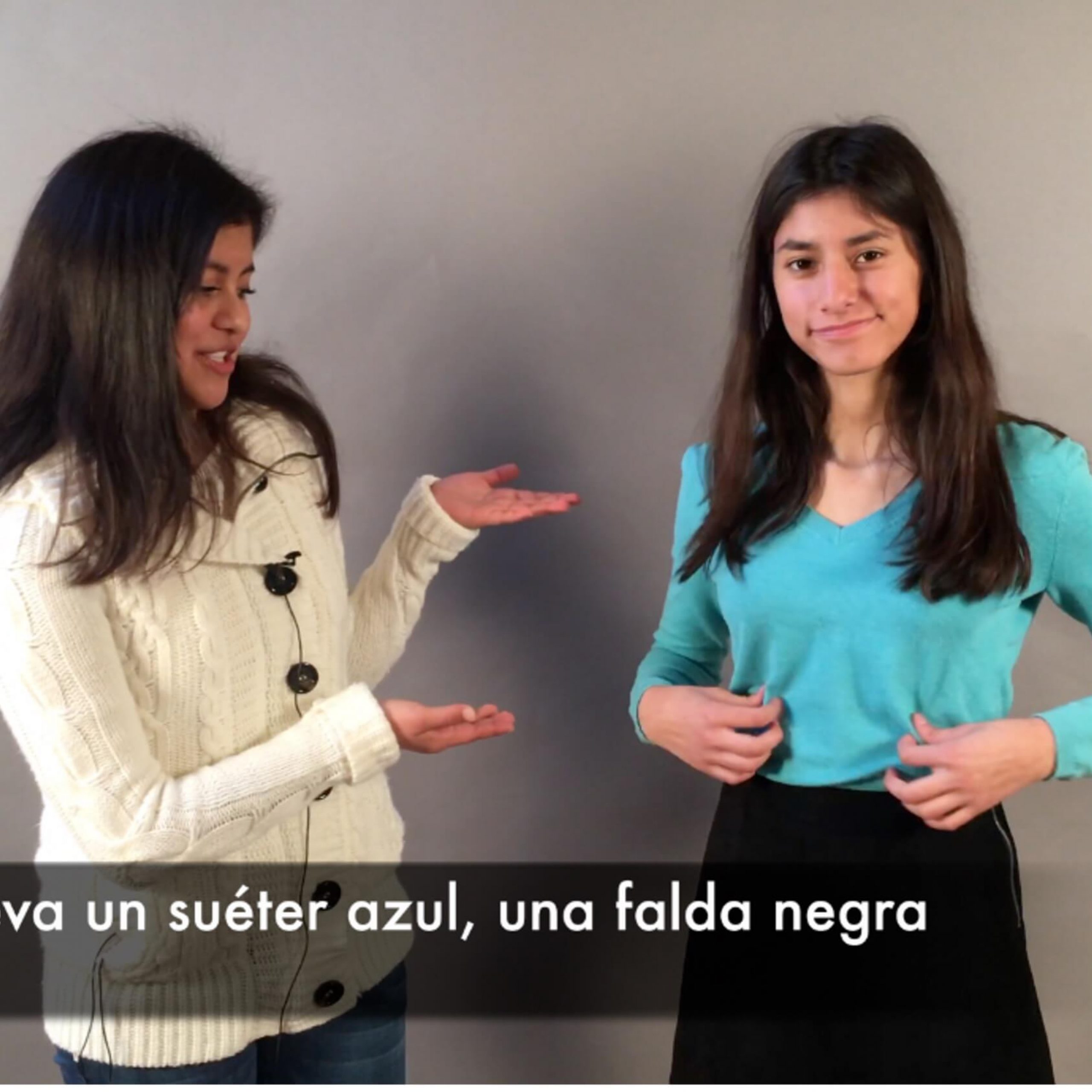
READING COMPREHENSION STRATEGIES
13. USE COGNATES:
Tap into students’ prior knowledge of their first language by inserting words into the text that are similar in English, like “taco, independiente, aventura, apetito, catástrofe” etc.
For example: SPANISH CLASSROOM OBJECTS TPRS stories, which provide comprehensible input for the Spanish classroom objects, use the following 15 cognates: Office Max, millón de dólares, la clase, grande, detención, necesita, profesora, examen, papá, Stanford, papel, estudiante, and Folsom Prison.
14. TEACH STUDENTS HOW TO GUESS THE MEANING FROM CONTEXT:
An excellent way to improve reading skills is to teach students how to guess the meaning of an unknown word by using contextual cues. Good readers may automatically figure out the meaning from the context, but struggling readers need to be formally taught how to do that. Below are a few ideas:
- Tell students to read the entire text or paragraph the first time, ignoring words they don’t know and trying to figure out the general meaning with the words they DO know.
- Tell students to look at the words before and after the new word.
- Tell students to look at the title of the story or text so they can use this knowledge to help them make informed guesses.
15. READ ALOUD:
Read the text or story out loud slowly several times. Hearing the sentences with the proper inflection and with normal word groupings helps with comprehension. By word groupings, I mean pausing at the correct time to demonstrate that certain words go together. For example: Al final del día / todavía / no había memorizado / el abecedario. (From “La Distancia Entre Nosotros”)
Acting out parts that lend themselves to gestures is also beneficial.
16. USE SYNONYMS OF THE NEW WORD WHEN READING:
When reading to students, when you encounter a difficult word, re-read the sentence, replacing the word with a synonym of a word they already know. For example: Marta es bella. Marta es muy bonita.
17. GIVE STUDENTS A LIST OF SENTENCE STARTERS:
FOR STUDENT PRODUCTION: I often pair students when giving a writing assignment. If I don’t give writing aids, students default to word-for-word translation, which guarantees an unreadable outcome. With a sentence starter, students have a high probability of writing more correct sentences and stories. Here are a few examples of sentence starters: Primero, en segundo lugar, luego, el otro día, ayer, anoche.
18. GIVE STUDENTS A TEMPLATE OF THE DESIRED LANGUAGE STRUCTURE, STORY, OR TEXT:
FOR STUDENT PRODUCTION: Another strategy I use often is to give students a template of the text structures. For example, I give them a narrative template with the beginning of each sentence already written. Students fill out the rest of the story with their own plot. For example: Ayer Mónica llegó a… Luego… Por supuesto…
I also prompt students to fill in some main information before they begin the story or article and give them examples:
Personajes: Ana y Pablo
Edad: Tienen 16 años.
Problema: A Ana le gusta Pablo pero Pablo tiene novia.
Solución: Ana sale con otro chico que le gusta.
19. INSTRUCT STUDENTS TO UNDERLINE DESIRED STRUCTURES IN A TEXT:
FOR STUDENT PRODUCTION: I tell a story using the structures I want students to use, and then I give them another sample story asking them to underline the structure we are studying. For example: Subraya todas las preguntas “tú,” or “Subraya todas las frases con dos verbos,” or, “Subraya todos los verbos en el pretérito.” Then, I give them written instructions about what structures need to be included in their story with multiple examples. And, of course, I provide a rubric so students know EXACTLY what is required for their story, group presentation, or dialogue.
20. USE AUDIO BOOKS AND ILLUSTRATED VIDEO STORIES:
Use audio books and Spanish or French video stories with illustrations and captions so students SEE the words, SEE the visuals that explain the words and HEAR the proper inflection and pronunciation as spoken by native speakers. Check out these cool Spanish video stories by BookBoxInc There are many useful online resources, such as Read Aloud Kid’s Book in Spanish. This story has the transcript below.
21. PROVIDE SUFFICIENT REPETITION IN CONTEXT:
And, lastly, the most important strategy: Provide enough comprehensible input or required vocabulary so students don’t need to translate. If students don’t have the foundational vocabulary to complete a task, they will have to resort to translation and even, GASP, Google Translate. A Spanish teacher I know gave his students an assignment even I couldn’t do without a vocabulary list and then lamented that they had used Google Translate to write their presentations.
When I asked my AP Spanish students to prepare a recipe from a Spanish-speaking country, I gave them an extensive vocabulary list of ingredients and cooking-related words. Even though I had lived in Spain and Mexico, I had rarely cooked in those countries and could not have successfully performed the task myself. They did a great job.
Another argument against translation: Literal translation confuses students. If language learners translate individual words, they will misunderstand the meaning of many sentences, especially those with idiomatic expressions. For example, “You are breaking my feet” in French means, “You are irritating me.” In Spanish, one says, “I HAVE hunger,” not, “I AM hungry.”
Why would anyone use a translation task for simple nouns unless they 1) didn’t know better (That’s not you), b) didn’t have time to create visuals (That may be you.) or 3) didn’t know there was an abundance of resources that cost practically nothing that SOMEONE ELSE spent months or even years to create on teacherspayteachers.com.
WHEN TO USE TRANSLATION:
Yes, I DO use translation, when teaching the direct and indirect object pronouns and the imperfect tense. Those concepts are the only two which I have been unable to explain with comprehensible input alone. Also, I find it necessary to spend two days teaching my students English grammar when teaching the object pronouns before going back to teaching in the target language. If they don’t understand the object pronouns in English, they will struggle in Spanish. English is also useful when comparing idiomatic expressions and differences in L1 and the target language.
I would love to have more activities and strategies to use instead of translation. Would you consider sharing your ideas? You may see them in my next Newsletter. Please leave your name so that I may give you credit.

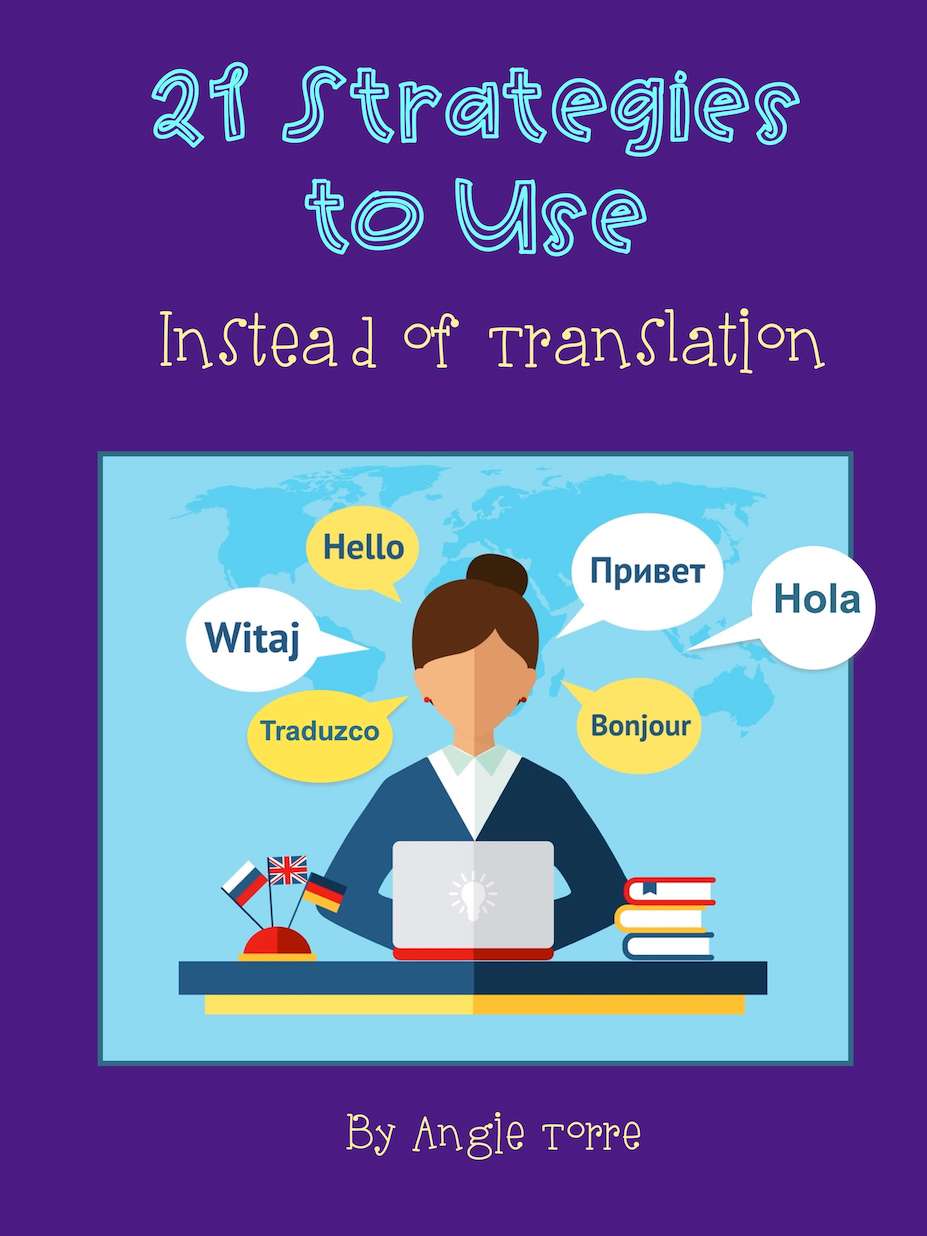



I need al this but in Italian ! Your stuff is amazing!
Hi, Roberta: So glad you like the resources. I used to speak Italian but I lost it because I didn’t use it. However, you may translate the resources into Italian! 🙂 Angie